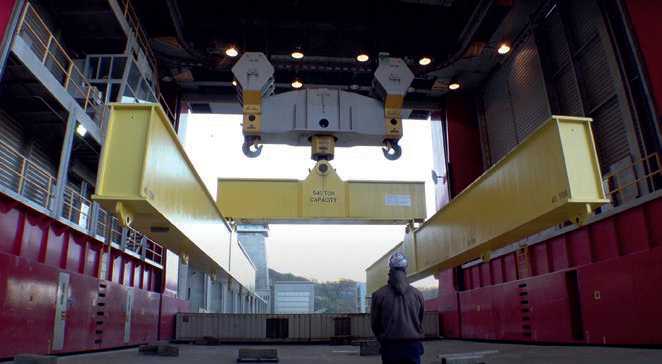The New York Power Authority (NYPA) has approved a five-year $38m contract to REEL COH, Canada, to fabricate, deliver and install a gantry crane with a lifting capacity of 680 tons for Niagara Power Project in Lewiston in Niagara County, New York.

The crane is a critical tool that will enable the power project’s 15-year modernization and digitization program titled Next Generation Niagara (NGN) and support NYPA’s role in advancing its climate action goals as outlined in the state’s Climate Leadership and Community Protection Act.
The work includes the design, fabrication, delivery, and installation of the crane with a lift capacity of 680 tons, a 15-ton monorail hoist, a 5-ton maintenance hoist, bird deterrent systems and closed-circuit television (CCTV). Construction of the crane is expected to be complete by 2026.
It was determined that REEL COH was the best value bidder based on its competitive pricing, experience, and its submission of a well-thought-out project execution plan. The first turbine outage to update the plant’s mechanical components will start in April 2023.
“Niagara Power Project’s overhead gantry crane is the workhorse that makes possible all the of the plant’s mechanical upgrades, especially those related to our $1.1bn multi-year Next Generation Niagara effort to modernize and extend the life of New York’s flagship clean energy plant,” said Justin Driscoll, interim president/CEO, NYPA.
“Many of the efforts to digitize the project are already underway, but a new crane is essential for planned major mechanical upgrades. We are pleased to have REEL COH help us achieve our bold goal to modernize and digitize our foundational hydroelectric plant so we can continue to consistently provide clean energy to our customers and New Yorkers across the state.”
Launched in 2019, Next Generation Niagara will extend the operating life of the Niagara Power Project, the largest source of clean electricity in New York State and one of the country’s largest hydroelectric projects.
Next Generation Niagara is focusing primarily on the 13 power generating units that make up the project’s Robert Moses Niagara Power Plant.
Standing 70 feet high and 60 feet wide, the project’s bright red overhead crane (dubbed “Big Red’ by plant staff) rolls along rail tracks at the project’s main generating facility, with lifting rotors and other major components for maintenance and repairs. It is original to the plant and is nearing the end of its life. The new crane will play an integral role in NGN and will be rated to carry loads 50 tons greater than its predecessor.
As Paul Parthemore, project engineer, NYPA explains: “The existing 630 ton crane at the Robert Moses Niagara Power Plant is original to the plant and over the years there has been unplanned maintenance outages on the crane, leading to deferred maintenance on all our generating units at the plant. The Board of Trustees at our July meeting approved the replacement of our gantry crane at Niagara. This is great for us, as we are going to get a brand new crane, increase capacity, a bird deterrent system, CCTV and its just going to be overall, a more reliable crane for the operations at Niagara and this will support the hydro pillar of our vision 2030.”
The NGN program improvements include replacing aging equipment with the latest machinery, incorporating digital technologies which will optimize the hydroelectric project’s performance.
In addition to the crane replacement, which enables the disassembly and reassembly of the generating units, Next Generation Niagara encompasses three other projects: design and implementation of an inspection platform to carry out inspections of the Robert Moses Plant’s penstocks – the 485 foot conduits are 26 feet in diameter along the face of the project that carry water from the forebay to the turbine generators; upgrading and digitizing control systems and building a new back-up control room and; overhaul and/or replacement of mechanical components that have reached the end of their operating life, for which the new crane will play an integral role.
Following the collapse of Niagara Mohawk’s Schoellkopf Power Station in 1956 the Federal Power Commission issued a license in 1957 to the New York Power Authority to redevelop Niagara Falls’ hydroelectric power, producing ts first power in 1961. After 60 years of operation and getting a new 50-year federal operating license in 2007, the Niagara Power Project remains the crown jewel of New York’s power infrastructure and growing clean energy economy.
Contact our crane specialists
Send us a message and we will get back to you as soon as possible.